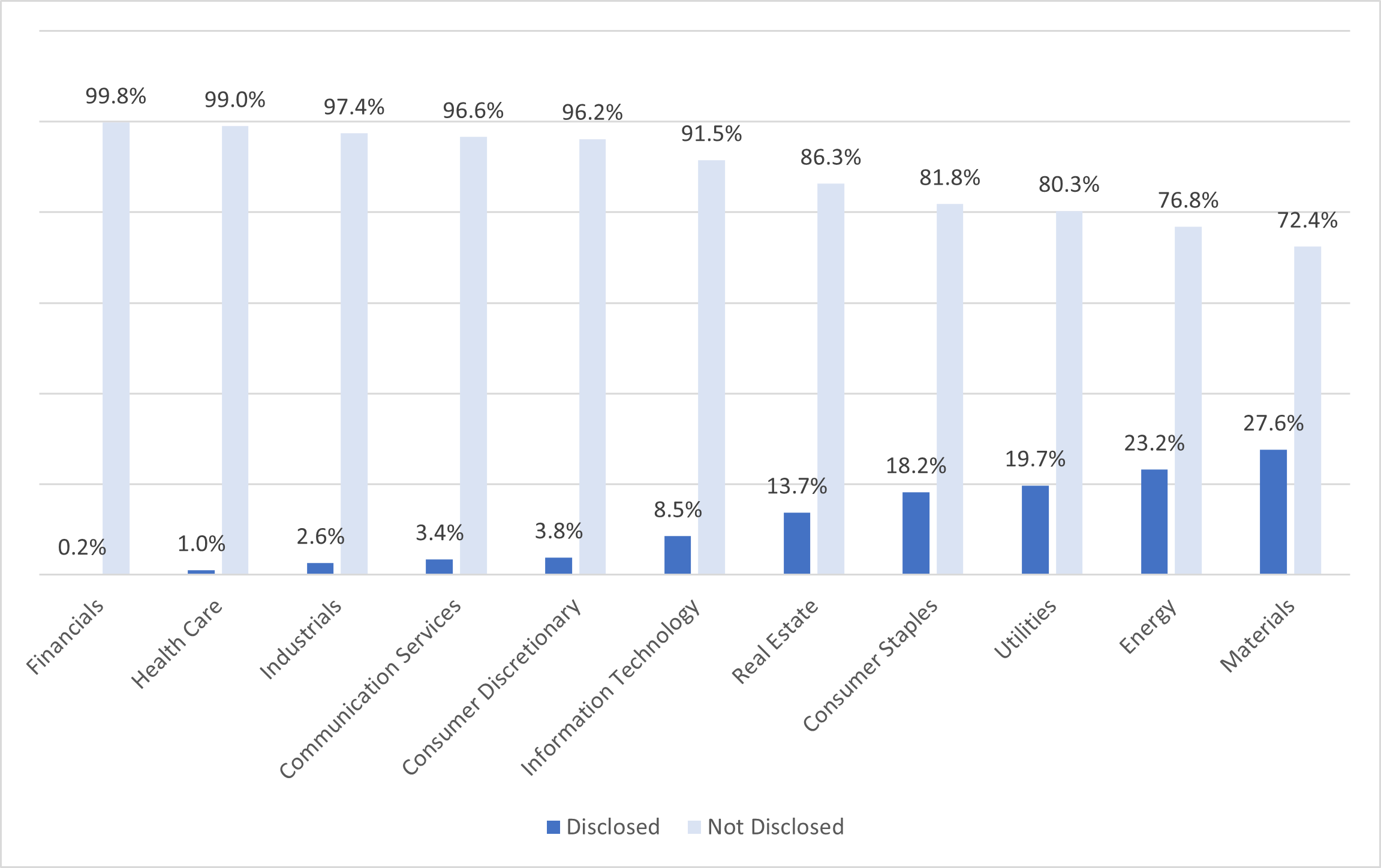Water Usage in Stressed Areas—A Key Metric
April 07, 2023 | Quick Take
Among US public companies, water-related disclosure remains infrequent. This is particularly true for information on the amount of water companies withdraw from water-stressed areas (that is, areas where water withdrawals exceed the amount of regenerated water or areas subject to water pollution or other causes of quality deterioration).
Insight for What’s Ahead
Companies should assess their exposure to water risk, as the financial cost of inaction can significantly outweigh the cost of mitigation measures. Setting up internal processes to examine the impact their operations and supply chains have on water availability in stressed areas is a first step companies can take while developing a comprehensive water risk management strategy.
Companies in the materials, energy, and utilities sectors are most inclined to disclose
Water withdrawn from water-stressed areas, disclosure rate by business sector in 2022

Source: ESGAUGE and The Conference Board, 2023
As expected, business sector analysis shows that companies in the materials, energy, and utilities sectors are the most inclined to disclose information on their water withdrawals from water-stressed sources. However, even in those sectors, disclosure rates remain remarkably low at 27.6 percent, 23.2 percent, and 19.7 percent, respectively. What is even more remarkable is the rate of reporting found among firms in the industrial sector: In 2022, only 2.6 percent of industrial firms in the Russell 3000 index reported information on the amount of water from stressed areas used in their business operations and supply chains.
For more statistics on environmental and other ESG disclosures, please visit our Live Dashboards on ESG Advantage, powered by ESGAUGE.











